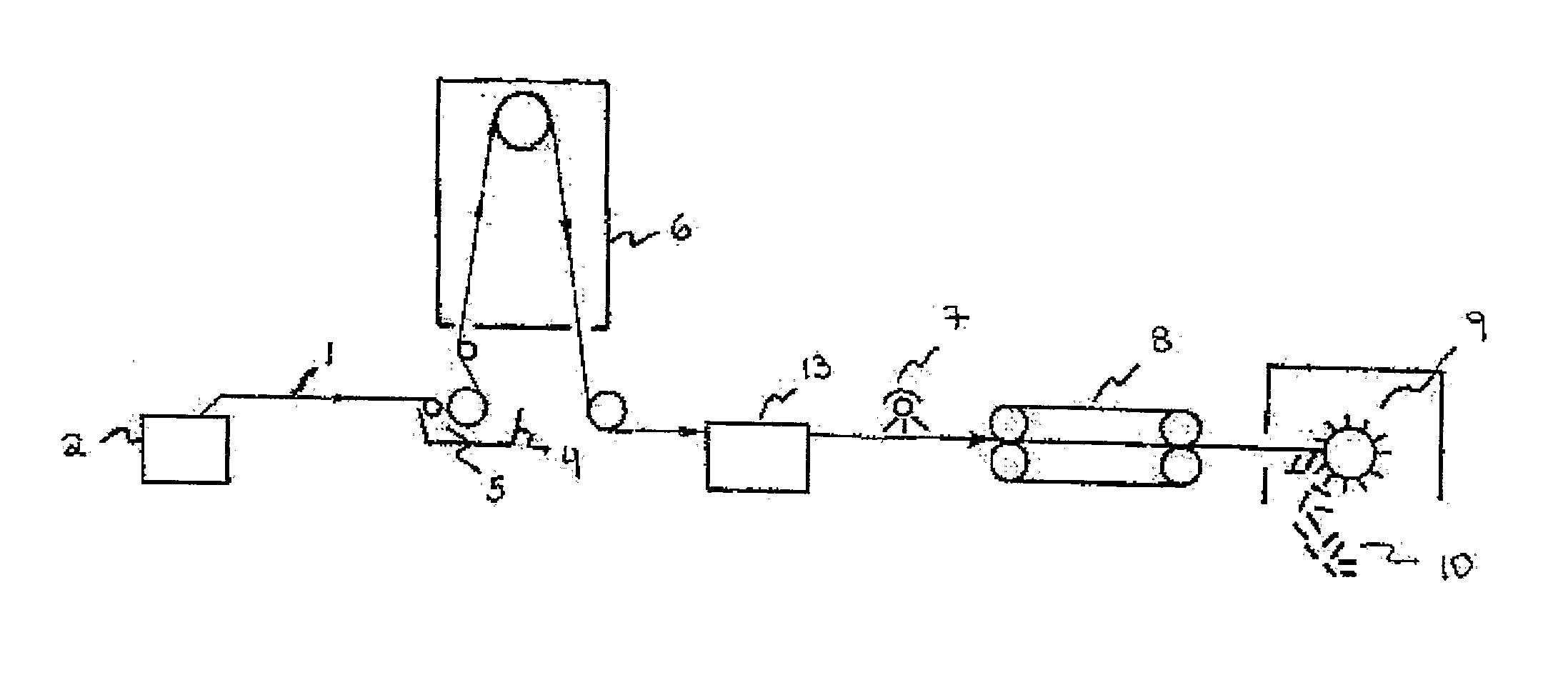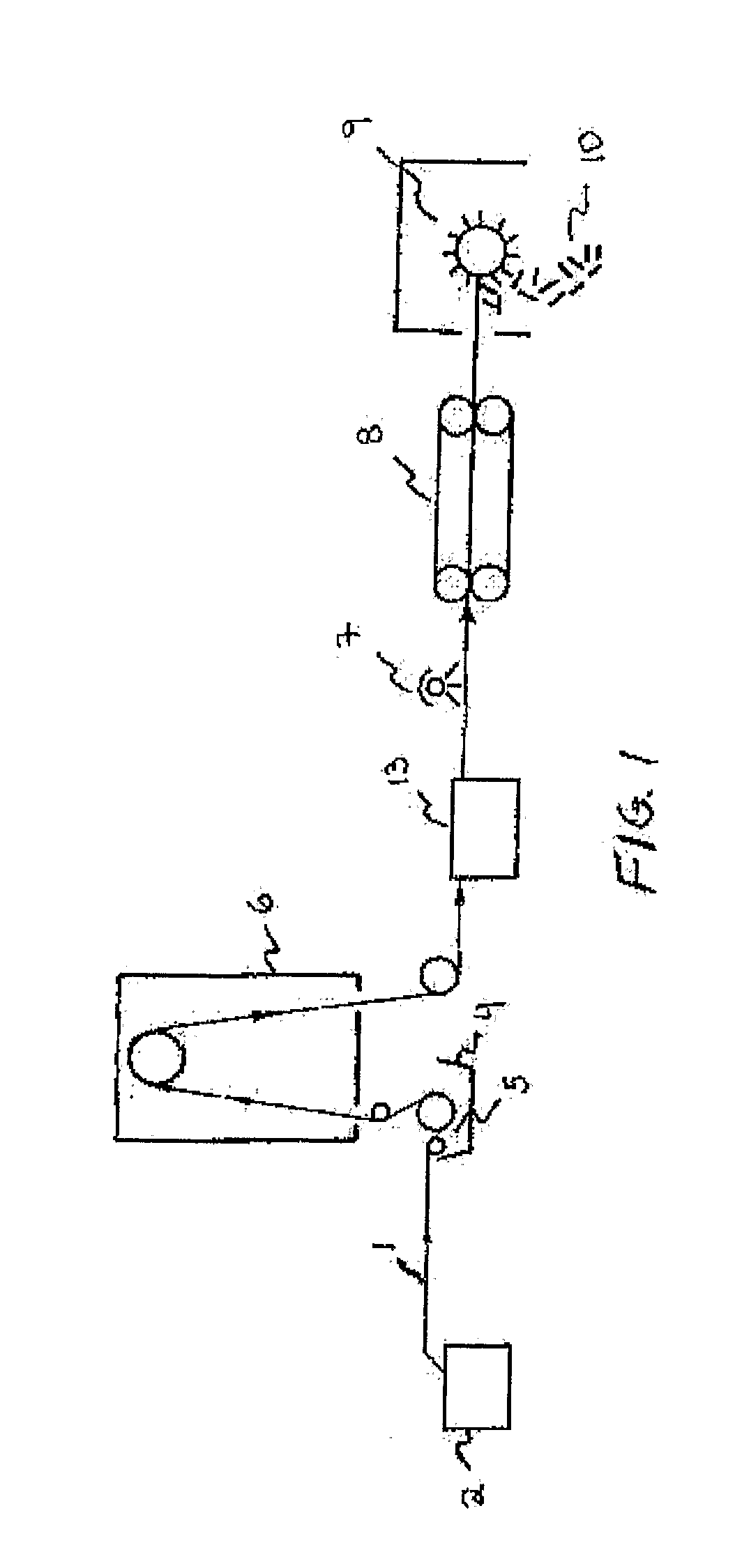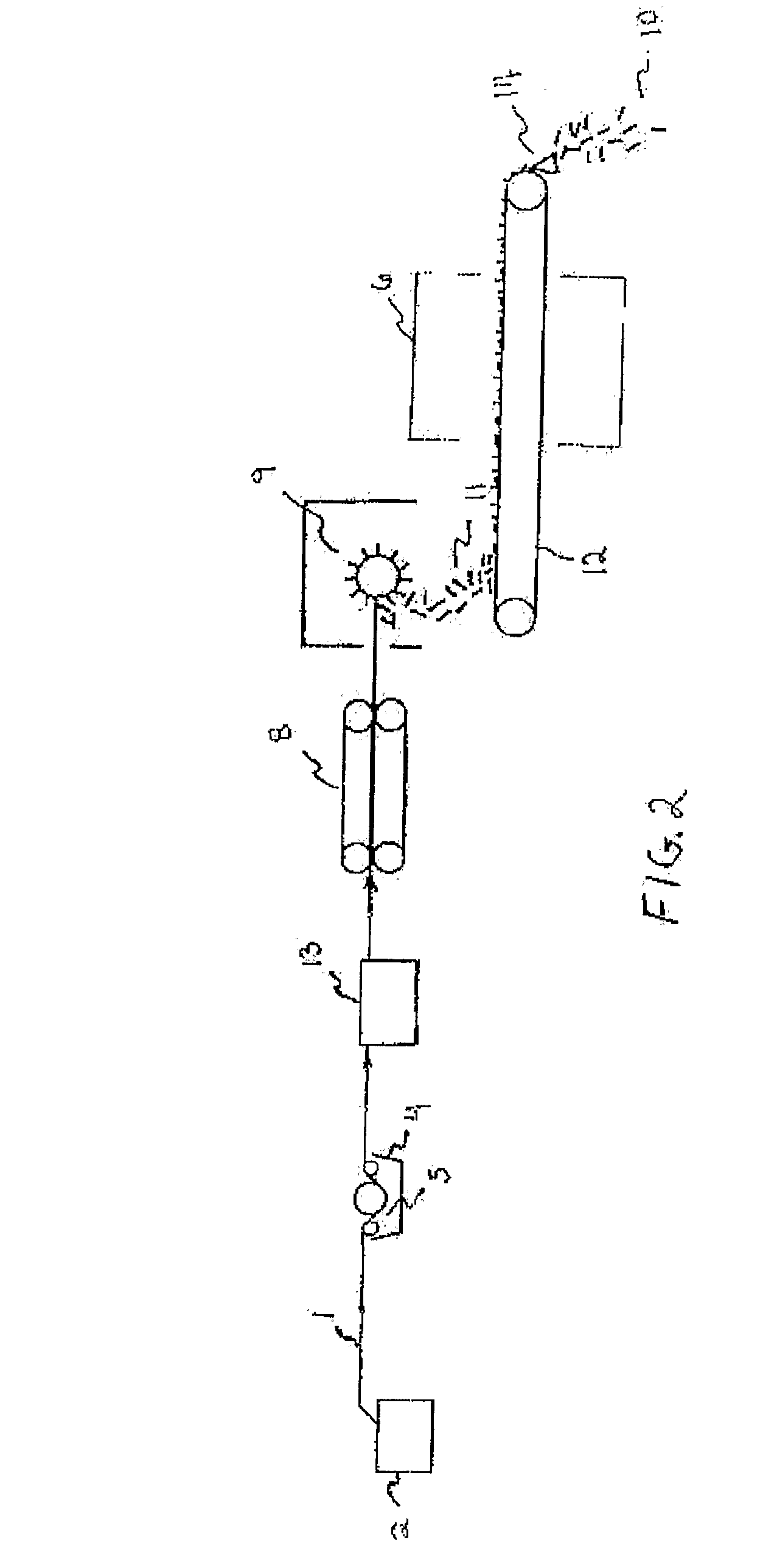Long Fiber-Reinforced Thermoplastic Concentrate and Method for Its Preparation
a technology of reinforced thermoplastics and concentrates, which is applied in the field of long fiber-reinforced thermoplastic concentrates, can solve the problems of incomplete penetration of fibers with resins, difficult production of long fiber-reinforced thermoplastic resins, and the like, and achieves the effect of increasing molecular weight and economic competitiveness
- Summary
- Abstract
- Description
- Claims
- Application Information
AI Technical Summary
Benefits of technology
Problems solved by technology
Method used
Image
Examples
example 1
[0065]A continuous glass roving strand (VETROTEX™ RO99 719 available from Saint-Gobain) is unwound from the outside of a standard bobbin. The roving is pulled through an aqueous melt-kneaded thermoplastic dispersion as set forth in FIG. 1 by a Brabender film pull roll unit at a rate of 8 feet per minute (ft / min.). The aqueous dispersion comprises 80 percent by weight deionized water and 20 percent by weight solids. The solids comprise 2.35 weight percent long chain carboxylic acid surfactant and 17.65 weight percent of a propylene-rich propylene and ethylene copolymer (9 percent ethylene) having a density of 0.876 grams per cubic centimeter (g / cc) and a melt flow rate (MFR) (under conditions of 230° C. and an applied load of 2.16 kilograms (Kg)) of 25 grams per 10 minutes (g / 10 min.). The average particle size of the dispersion is about 0.61 microns with a polydispersity of 1.31. The pH value of the melt-kneaded aqueous dispersion is 11.6.
[0066]The glass roving is pulled through the...
example 2
[0068]Example 2 is run the same as Example 1 with the exception that the strand after exiting the oven is passed though a rounding die and cools in the air to a stiff, round strand. A Killion tube puller is utilized rather than the Brabender film pull roll unit and the Killion tube puller is located after the rounding die and before the cutter. The glass level is determined to be 90.7 percent based on the weight of the long glass thermoplastic concentrate.
example 3
[0069]Example 3 is run the same as Example 2 with the exception that the amounts of polypropylene homopolymer pellets (5E16S), polypropylene homopolymer pellets (DX5E30S), and polypropylene and ethylene copolymer pellets (7C54H) are 9, 9, and 47 weight percent, respectively. The glass level is in the concentrate is determined to be 90.7 percent based on the weight of the long glass thermoplastic concentrate.
PUM
| Property | Measurement | Unit |
|---|---|---|
| Fraction | aaaaa | aaaaa |
| Percent by mass | aaaaa | aaaaa |
| Percent by mass | aaaaa | aaaaa |
Abstract
Description
Claims
Application Information
 Login to View More
Login to View More - R&D
- Intellectual Property
- Life Sciences
- Materials
- Tech Scout
- Unparalleled Data Quality
- Higher Quality Content
- 60% Fewer Hallucinations
Browse by: Latest US Patents, China's latest patents, Technical Efficacy Thesaurus, Application Domain, Technology Topic, Popular Technical Reports.
© 2025 PatSnap. All rights reserved.Legal|Privacy policy|Modern Slavery Act Transparency Statement|Sitemap|About US| Contact US: help@patsnap.com



